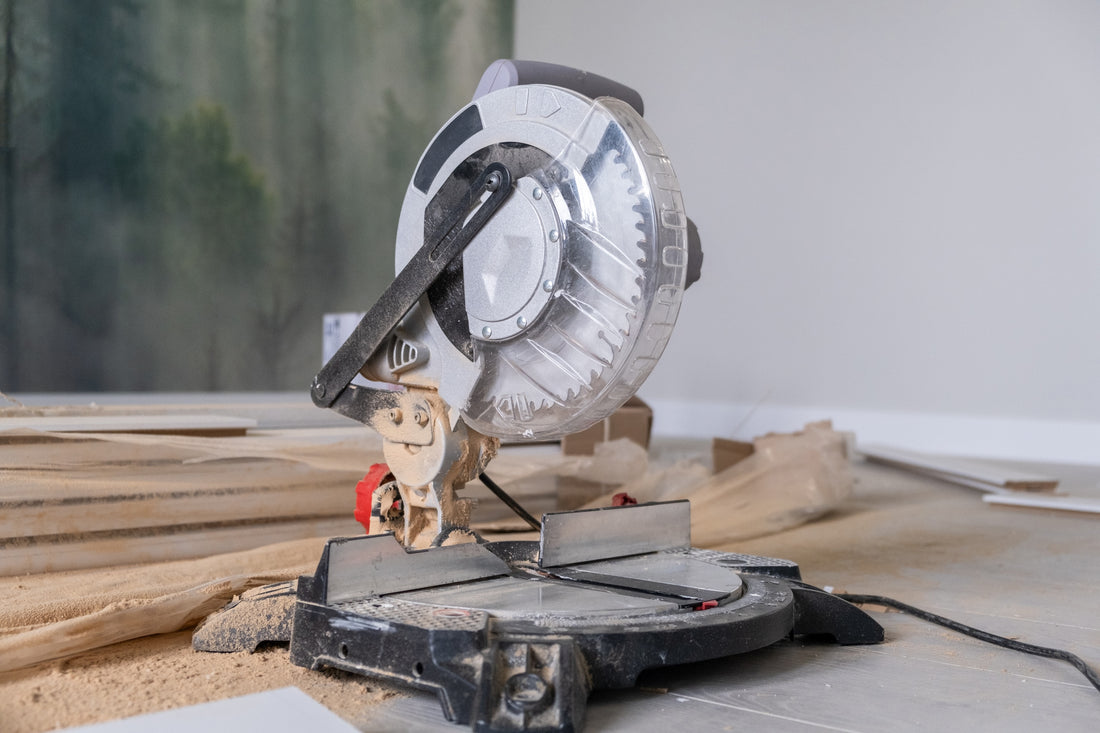Workplace safety is a crucial concern across various industries. Ensuring that employees are well-protected from potential hazards not only minimizes the risk of injuries but also enhances productivity and morale. One essential piece of safety gear that is often overlooked is cut-resistant work gloves.
These gloves are designed to protect workers’ hands from cuts, abrasions, and other injuries, making them indispensable in many high-risk jobs. In this article, we will explore five jobs that would greatly benefit from the use of cut-resistant gloves, with a special focus on A5 cut resistant gloves, which offer a high level of protection.
What are Cut Resistant Gloves?
Cut-resistant gloves are specially designed gloves made from high-performance materials that provide protection against cuts, punctures, and abrasions. These gloves are commonly used in industries where workers handle sharp objects or tools. The level of cut resistance is measured by the ANSI/ISEA 105 standard, which ranges from A1 to A9, with A9 being the highest ANSI Cut Level of protection. A5 cut resistant gloves offer a mid-to-high level of cut protection, making them suitable for a wide range of applications. They are often made from materials like leather, neoprene, and thermoplastic rubber, which provide durability and strength without compromising dexterity and comfort.
Advanced Materials
The materials used in cut-resistant gloves play a critical role in their effectiveness. Leather, both natural and synthetic, provides excellent durability and protection against cuts and abrasions. Neoprene offers flexibility and protection against common chemicals like gasoline and oils, while thermoplastic rubber (TPR) provides impact protection and enhances glove durability. Combining these materials ensures that the gloves offer maximum protection and comfort for various applications.
Importance of Cut Resistant Gloves
Cut-resistant gloves play a vital role in ensuring workplace safety. They are essential for preventing injuries that can lead to lost workdays, medical costs, and reduced productivity. By providing a durable barrier against sharp objects, these gloves allow workers to perform their tasks confidently and efficiently. The use of cut-resistant gloves not only protects employees but also demonstrates a company’s commitment to safety and compliance with occupational health regulations. Moreover, reducing the incidence of hand injuries can lead to higher employee morale and job satisfaction, contributing to a positive work environment and improved overall performance.
Compliance and Standards
Adhering to safety standards and regulations is crucial for businesses. The ANSI/ISEA 105 standard provides a reliable benchmark for evaluating the cut resistance of gloves. Companies that ensure their protective equipment meets these standards can avoid legal issues and potential fines related to non-compliance. Additionally, using standardized protective gear helps maintain consistency in safety practices across different departments and job roles.
Industries that Benefit from Cut Resistant Gloves
1. Construction Workers

Construction workers are involved in a variety of tasks, including building, repairing, and maintaining structures. They handle a range of materials and tools, such as nails, saws, and other sharp objects, making them particularly vulnerable to cuts and punctures.
Risks Involved in Construction
The construction industry is rife with hazards. Workers often deal with sharp objects and power tools, and the nature of the job requires frequent handling of materials that can cause serious injuries. Common risks include cuts from handling sharp materials like glass, metal, and wood, as well as injuries from tools like saws and knives.
Benefits of Cut Resistant Gloves for Construction Works
Cut-resistant gloves provide a crucial layer of protection for construction workers. By wearing these gloves, workers can handle sharp materials and tools with reduced risk of injury. A5 cut resistant gloves, in particular, offer a high level of protection against cuts and punctures, making them ideal for the construction industry. These gloves are designed to withstand significant force, protecting workers' hands from sharp edges and reducing the likelihood of severe injuries.
2. Metal Fabricators

Metal fabricators work with metal to create parts and structures. This involves cutting, bending, and assembling metal pieces, which often requires the use of heavy machinery and sharp tools.
Risks Involved in Metal Fabrication
Metal fabricators are at constant risk of cuts and punctures from sharp metal edges and tools. The nature of their work means they are frequently handling materials that can easily cause serious injuries if proper precautions are not taken.
Benefits of Cut Resistant Gloves for Metal Fabricators
A5 cut resistant gloves are particularly beneficial for metal fabricators. These gloves provide high levels of protection against sharp edges and can withstand the rigors of metalworking. By wearing cut-resistant gloves, metal fabricators can handle materials more safely, reducing the risk of injury and ensuring that they can work more efficiently and confidently.
3. Glass Handlers

Glass handlers are responsible for transporting, cutting, and installing glass products. This job requires meticulous handling of fragile and often sharp materials.
Risks Involved with Sharp Blades
Handling glass poses significant risks. Glass handlers are constantly exposed to sharp edges and the potential for glass to shatter, leading to severe cuts and injuries.
Benefits of Cut Resistant Gloves for Glass Handlers
For glass handlers, A5 cut resistant gloves offer a high degree of protection. These gloves are designed to protect against the sharp edges of glass, preventing cuts and reducing the risk of injury. The high cut resistance of A5 gloves makes them ideal for this line of work, allowing handlers to manage glass safely and efficiently.
4. Factory Workers

Factory workers perform a variety of tasks, including operating machinery, assembling products, and handling raw materials. These tasks often involve using sharp tools and equipment.
Risks Involved with Working in a Factory
The factory environment can be hazardous, with workers frequently exposed to sharp objects, moving parts, and machinery that can cause cuts and other injuries. The risk of hand injuries is particularly high in this setting.
Benefits of Cut Resistant Gloves for Factory Workers
A5 cut resistant gloves are highly beneficial for factory workers. These gloves provide robust protection against cuts and punctures, allowing workers to handle sharp tools and materials safely. By wearing these gloves, factory workers can reduce the risk of hand injuries and maintain high levels of productivity.
5. Automotive Technicians

Automotive technicians are responsible for repairing and maintaining vehicles. Their work involves handling sharp car parts, tools, and equipment, often in confined spaces.
Risks Involved for Automotive Technicians
Automotive technicians face numerous risks, including cuts from sharp parts and tools, as well as exposure to hazardous materials. The nature of their work requires frequent use of their hands in situations where injuries can easily occur.
Benefits of Cut Resistant Gloves for Automotive Technicians
A5 cut resistant gloves provide excellent protection for automotive technicians. These gloves are designed to withstand cuts and punctures, ensuring that technicians can work safely even when handling sharp parts and tools. The high level of cut resistance offered by A5 gloves makes them ideal for the automotive industry, helping to prevent injuries and improve overall safety.
How to Pick the Right Cut Resistant Gloves for You
Choosing the right cut-resistant gloves for your specific needs involves considering several factors. First, assess the level of protection required for your tasks. The ANSI/ISEA 105 standard provides a helpful guide, with levels ranging from A1 to A9. If you work with moderately sharp objects, A5 cut resistant gloves are a suitable choice, offering a high level of protection without compromising dexterity.
Additionally, consider the glove material. Leather, neoprene, and thermoplastic rubber are popular choices for their durability and cut resistance. Ensure the gloves fit well and provide comfort for prolonged use. Look for features like reinforced fingertips and good grip, which can enhance safety and functionality in your specific work environment. Finally, consider the price to ensure you are getting a cost-effective purchase without sacrificing quality.
Ergonomic Design and Comfort
When selecting cut-resistant gloves, it's important to consider the ergonomic design and comfort. Gloves that fit well and allow for a full range of motion can reduce hand fatigue and improve overall efficiency. Features such as padded palms, breathable materials, and flexible fabrics can enhance comfort, especially during long work hours. Try different brands and models to find the best fit for your needs, ensuring that the gloves do not compromise on protection while providing maximum comfort.
How to Pick the Right Cut Resistant Gloves for Your Employees' PPE
Selecting the right cut-resistant gloves for your employees’ personal protective equipment (PPE) involves a thorough assessment of their work tasks and the associated risks. Start by identifying the types of cuts and abrasions your employees are most likely to encounter. For jobs involving moderate to high cut hazards, A5 cut resistant gloves are an excellent option, providing robust protection.
Consider the fit and comfort of the gloves, particularly around the wrist, as employees are more likely to wear PPE consistently if it is comfortable. Look for gloves made from high-performance materials like leather, neoprene, and thermoplastic rubber, and ensure they have features such as reinforced areas and good grip. Finally, involve your employees in the selection process to get feedback on comfort and usability, ensuring that the chosen gloves meet their needs effectively.
Customization and Training
In addition to selecting the right cut-resistant gloves, providing proper training on their use is essential. Employees should be educated on the importance of PPE and how to wear and maintain their gloves correctly. Customizing gloves to specific job roles can also enhance protection and comfort. For instance, gloves with touchscreen compatibility can be beneficial for workers who need to operate digital devices frequently. Ensuring that gloves are available in various sizes can also help accommodate different hand shapes and sizes, improving overall fit and comfort.
Protect Your Hands with High-Quality Cut Resistant Gloves
In conclusion, cut-resistant gloves, especially A5 cut resistant gloves, are essential for protecting workers in high-risk jobs. Construction workers, metal fabricators, glass handlers, factory workers, and automotive technicians all face significant risks of hand injuries due to the nature of their work. By implementing the use of A5 cut resistant gloves, these workers can perform their tasks more safely and efficiently, reducing the risk of injuries and enhancing overall productivity.
Investing in high-quality cut-resistant gloves is not just about compliance with safety regulations; it’s about prioritizing the well-being of employees. With the right protective gear, businesses can foster a safer working environment, boost employee morale, and ultimately achieve better performance.
If your business involves any of these high-risk jobs, consider equipping your employees with A5 cut resistant gloves from Safety TUFF. The benefits far outweigh the costs, ensuring that your workforce remains safe, healthy, and productive. Learn more about our wholesale options, or purchase a pair cut resistant gloves online.

